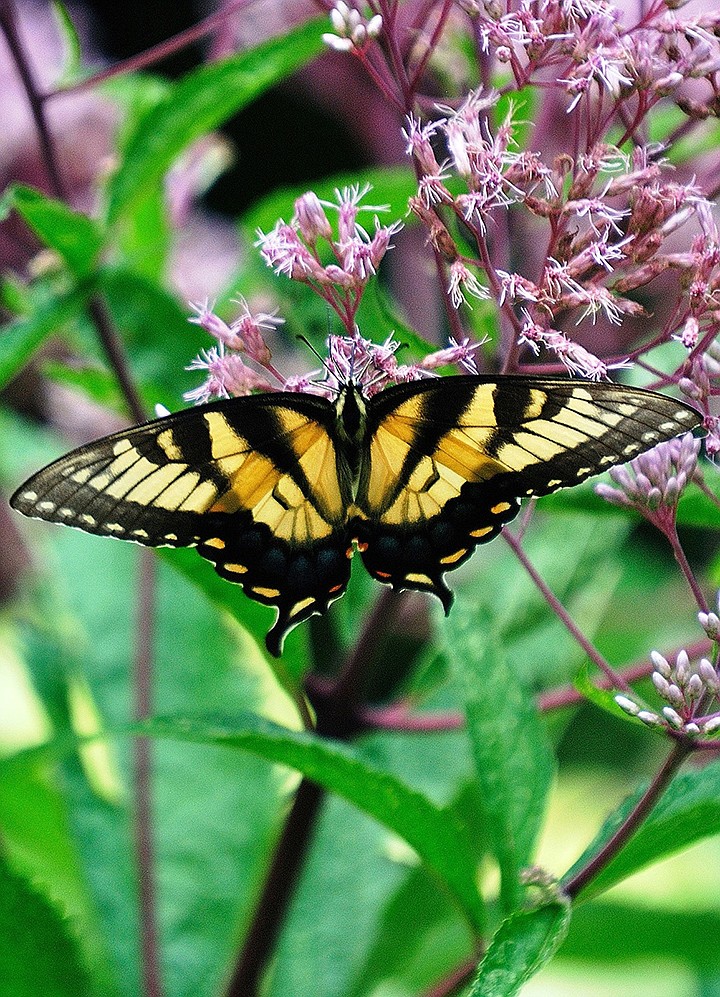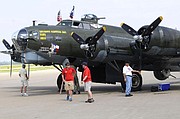This time of the year garden writers all over the country try to reach readers with ideas of New Year's resolutions. Over the years you may have seen topics like hire only licensed or certified landscape professionals, compost, recycle, go native, plant water-wise, all of which are super ideas. This year I really want to reach out to you with the 'canary in the coal mine.'
Dr. Jeffrey Glassberg President and Founder of the North American Butterfly Association told me when we first met that butterflies were like the canary in the coal mine when it came to our ecosystem. A healthy butterfly population, one where new generations are constantly being created, speaks volumes for the overall health of the local environment.
I saw that first hand as the Director of the National Butterfly Center, in Mission, Texas. This 100-acre property owned by the North American Butterfly Association is located on the Lower Rio Grande River, right across from Mexico. Here native plants are arranged in gardens providing everything to not only attract but sustain the life of butterflies.
Well over 200 species have been identified right there which is quite an accomplishment when you consider most states in their entirety have far less. An example is Georgia where I live now, it has documented 160 species of butterflies. The larger lesson taught at the National Butterfly Center was that when you start providing for butterflies, your whole localized ecosystem seems to change.
I feel I was able to see this at the Columbus Botanical Garden and the Coastal Georgia Botanical Gardens in Savannah where I later served as Director. Birds who eat bugs including your butterflies and those who eat the seeds from plants you grow show up, while at the same time hummingbirds start to frequent many of the flowers while also carrying on pollination. Dragonflies, the arch-enemy of butterflies, proliferate as well.
Rabbits show up to eat their portion of some of the plants growing for butterflies and perhaps providing a little weed patrol too. Then those animals who eat birds and rabbits show up, and life really gets exciting. You'll find that once you start growing for pollinators, butterflies, bees, and birds, you will have created your own National Geographic spectacle. A word of caution, it will be hard for you to go indoors, to do your regular chores, pay the bills, and cook the meals. The kids may get off the video games.
You will find your outlook on caterpillars changing. At almost every seminar I give there is a stopping point about midway, where I ask the audience by a show of hands if they are caterpillar friendly. I am delighted to say I sense a real change within the gardening public. The caterpillar, once perhaps considered the enemy of the garden has now become the recognized reward, and woe to the lizard or bird that picks one off.
I remember one day in Savannah taking a couple of VIPs on a tour of the gardens and we found ourselves lingering at a Christmas bush senna (Senna bicapsularis), we weren't photographing the beautiful yellow blossoms but instead the Cloudless Sulphur caterpillar. These are among the most striking in the world of butterflies.
My wake-up call however of the importance of caterpillars came in Savannah when I received a phone call from a lady that was virtually in tears. She had Monarch caterpillars but all of her milkweed had been devoured. She asked almost hysterically if she could bring them to us since we had so many milkweeds. At least I thought we had many.
She showed up with a box containing 100 caterpillars. I slowly walked through the garden. A little milkweed plant got one caterpillar while larger plants were gifted with two or three. It took no time before we had little to no leaves as well.
Here is hoping in 2019 you'll start gardening with butterflies and other pollinators in mind. Your home ecosystem will thrive while providing you with beauty and untold joy. Take these cold dreary days to research the plants recommended for your area.



